Introduction: The Power Behind the 5×5 Workout
The 5×5 workout has carved out a legendary place in strength training culture for good reason. As a foundational program based on simplicity, consistency, and measurable progression, it emphasizes five sets of five repetitions for key compound movements. With its roots in the strength-building strategies of old-school powerlifters and bodybuilders, this training style has stood the test of time by consistently delivering results. Whether you’re a novice lifter eager to gain muscle or an intermediate athlete aiming to break plateaus, the 5×5 workout offers a methodical, science-backed route to full-body strength. Within this article, we’ll explore the inner mechanics of the five by five workout, the philosophy that drives its success, and how to tailor it to suit different fitness goals.
By focusing on compound lifts that engage multiple muscle groups, the 5×5 workout plan aligns perfectly with modern sports science principles. It provides not only hypertrophy (muscle growth) but also improves neuromuscular efficiency, metabolic conditioning, and real-world functional power. This approach has been embraced globally, from garage gym warriors to competitive lifters, for its straightforward structure and undeniable efficiency. Let’s delve into how this classic method continues to dominate discussions around optimal training for strength and muscular development in the twenty-first century.
You may also like: The Ultimate 30-Day Workout Plan for Men Working Out in the Gym: Proven Full Body Strength Exercises to Maximize Results
Understanding the Foundation of the 5×5 Workout Program
At the core of the 5×5 workout program lies the principle of progressive overload applied through heavy compound lifts performed in a manageable volume. The name itself—five sets of five reps—is deceptively simple. But behind this structure is a powerful strategy designed to maximize muscular recruitment and adaptation. Key exercises typically include the squat, bench press, and barbell row or deadlift, though variations may differ slightly depending on the chosen version of the program.
This configuration works because it targets type II muscle fibers—the fast-twitch fibers responsible for strength and explosive power. The relatively low rep range with heavier weights allows for maximal intensity while still offering enough volume to stimulate muscle growth. When performed consistently, the cumulative effect of five intense sets leads to both muscular hypertrophy and neurological adaptation. This results in better coordination, improved form, and more efficient recruitment of muscles across the entire body.
Moreover, the 5×5 training format provides a predictable framework that’s easy to measure and track. For beginners, this helps develop consistency and confidence. For more advanced lifters, microloading strategies (such as increasing weights by 2.5 to 5 pounds per session) make it easier to push through stubborn plateaus. Every set becomes a test of both mental focus and physical capacity, reinforcing discipline while fostering resilience—two key pillars of long-term fitness success.
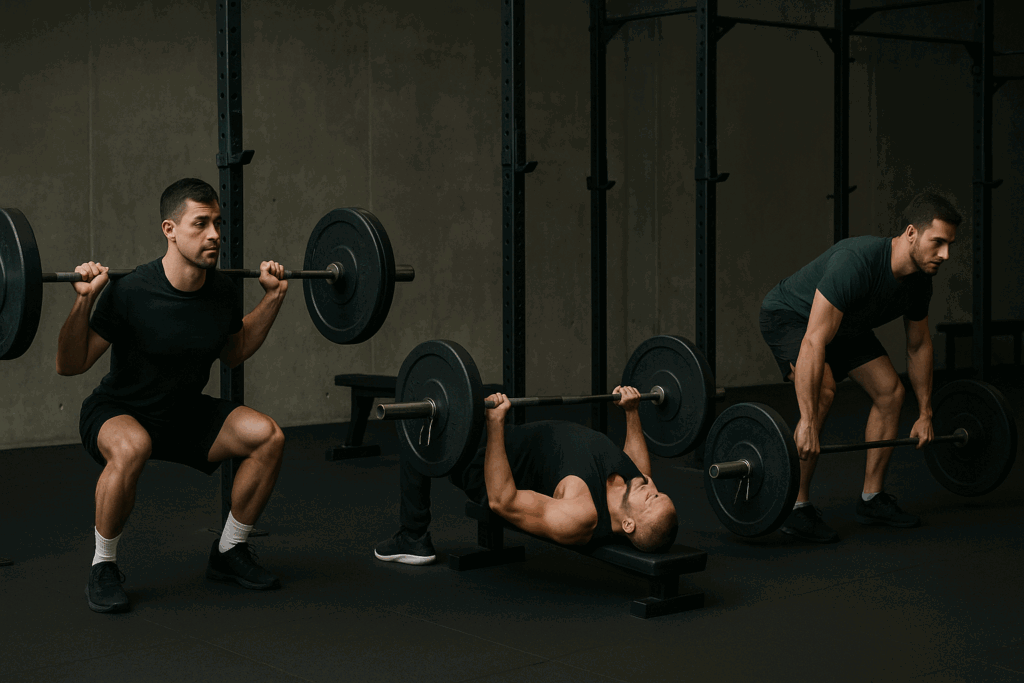
Why the 5×5 Workout Exercises Deliver Full-Body Strength
One of the most compelling reasons for the enduring popularity of 5×5 workout exercises is their ability to activate large muscle groups in unison. Unlike isolation routines that focus on individual muscles, compound exercises like the squat, deadlift, and bench press involve complex joint movements. This holistic approach ensures that every major muscle group is challenged, including supporting muscles that contribute to stability and posture.
Consider the squat, for example. Performing five heavy sets of five repetitions recruits not only the quadriceps but also the glutes, hamstrings, core, and even the lower back and calves. Similarly, the deadlift is a full-body lift that integrates the posterior chain, upper back, forearms, and more. When these types of lifts are performed regularly at moderate to high intensity, the body adapts by increasing strength and muscle coordination across a broad range of motions.
This is particularly important for individuals interested in real-world functional fitness. Movements in everyday life—whether lifting groceries, climbing stairs, or playing sports—require integrated muscle function. The 5×5 workout routine strengthens these movement patterns, reducing the risk of injury and increasing muscular resilience. Moreover, the hormonal response triggered by full-body compound lifts—such as increases in testosterone and growth hormone—can further enhance muscle development and metabolic function, compounding the benefits of this approach.
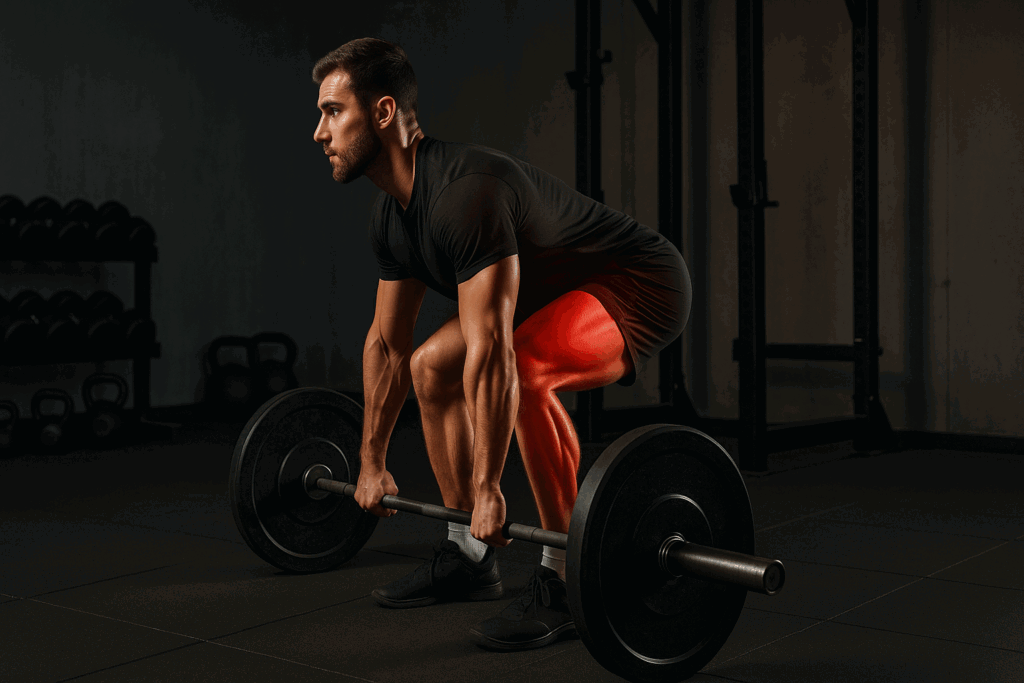
Building Muscle and Strength with the 5×5 Workout Plan
While the 5×5 workout plan is often praised for its ability to increase raw strength, it is equally effective in promoting muscular hypertrophy when programmed appropriately. This is because the chosen rep and set scheme sits in the sweet spot between maximal strength and muscle-building volume. Five reps per set are heavy enough to challenge the muscles, but five total sets provide the volume needed to induce microtrauma and trigger muscle growth during recovery.
What makes the 5×5 training approach especially valuable is its linear progression. Most versions of the program encourage small, consistent increases in weight from session to session. This incremental loading not only prevents plateaus but also reduces the likelihood of overtraining. As long as the body is provided with adequate recovery—including nutrition, hydration, and sleep—this slow and steady increase leads to long-term muscular gains.
Additionally, the program enhances neuromuscular efficiency, which plays a crucial role in both strength and muscle development. Over time, lifters become more adept at activating the right muscles at the right time, resulting in improved form and reduced risk of compensatory movement patterns that lead to injuries. This makes the 5×5 program an excellent foundational strategy for those looking to build both size and strength in a balanced and sustainable way.
The Lift Strong 5×5 Philosophy: Mental and Physical Mastery
The lift strong 5×5 philosophy is not just about stacking plates on a barbell—it’s a mindset that cultivates discipline, resilience, and growth both inside and outside the gym. Unlike flashy workout trends that promise instant results, the 5×5 method requires patience, consistency, and a willingness to embrace gradual progress. Each session is a test of willpower, as athletes must push themselves to complete all five sets with good form, even when fatigue sets in.
This mental training is just as important as the physical gains. By challenging limits and facing discomfort head-on, practitioners of the five by five workout develop a sense of grit that carries over into other aspects of life. It becomes easier to stay committed to goals, manage stress, and maintain focus under pressure. This psychological fortitude often becomes a defining trait of those who embrace long-term strength training.
Physiologically, the emphasis on foundational movements and progressive overload leads to steady improvements in posture, mobility, and muscular balance. The repetitive nature of the program allows for technical mastery of complex lifts, which is essential for safety and long-term joint health. Lifters who follow the lift strong 5×5 mindset not only grow stronger, but they also move with more control and confidence, achieving a synergy between body and mind that is rare in conventional fitness programs.

How to Customize the 5×5 Workout Routine for Your Goals
Though the standard 5×5 workout routine is highly effective, it can also be customized to fit individual goals, training history, and recovery capacity. For beginners, a three-day-per-week full-body format is often ideal. This allows enough recovery time between sessions and minimizes the risk of overuse injuries. Each workout typically includes three compound lifts—one lower body movement and two upper body movements—with a focus on correct form and progressive loading.
Intermediate lifters, who may have already built a base level of strength, often benefit from variations that introduce volume waves, deload weeks, or accessory exercises. These modifications allow for better management of fatigue and can be tailored to target specific weaknesses. For example, adding Romanian deadlifts or split squats to complement the primary lifts can enhance posterior chain development and single-leg stability, respectively.
Advanced lifters, who have maxed out linear progression, may opt for periodized 5×5 programs that use undulating intensity and variable volume. This might include heavy days focused on maximal strength, moderate days for technique and hypertrophy, and light days for recovery and mobility. By cycling intensity and volume, athletes can continue progressing while minimizing the risk of central nervous system fatigue. Regardless of the version used, the foundational principle remains the same: consistent effort over time produces extraordinary results.
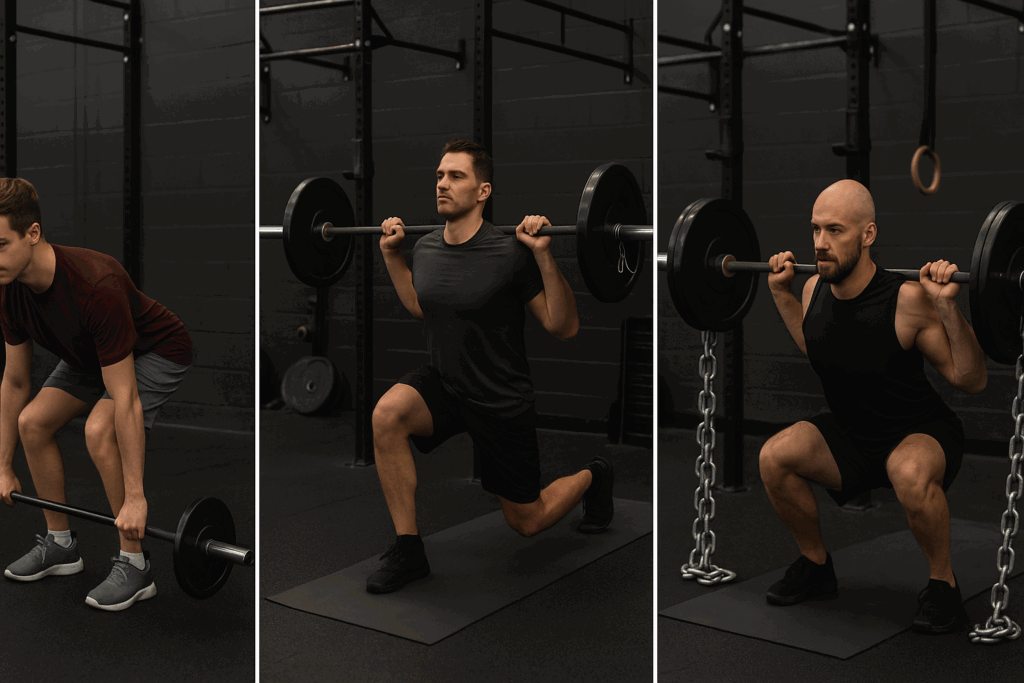
The Science Behind the 5×5 Program and Muscle Adaptation
From a physiological perspective, the 5×5 program stimulates three key mechanisms responsible for muscle growth and strength: mechanical tension, muscle damage, and metabolic stress. The five-rep range ensures that lifters are working with loads heavy enough to maximize tension across the muscle fibers. Performing multiple sets with short rest periods creates microtrauma, which prompts the body to repair and rebuild muscle tissue stronger than before.
Neurologically, the 5×5 workout enhances motor unit recruitment. This refers to the brain’s ability to activate more muscle fibers during a contraction, a skill that improves with practice. Compound movements in the 5 x 5 routine require coordinated action across multiple joints and muscle groups, which strengthens these neural pathways and enhances performance in sports, daily life, and other types of training.
Additionally, regular 5×5 training induces favorable hormonal responses. Research shows that compound lifting elevates testosterone and growth hormone levels, both of which are critical for muscle growth and recovery. Over time, this hormonal environment supports sustained progress and metabolic improvements, including better insulin sensitivity and fat oxidation. These benefits explain why the 5 and 5 workout continues to deliver transformative outcomes for dedicated athletes and casual lifters alike.
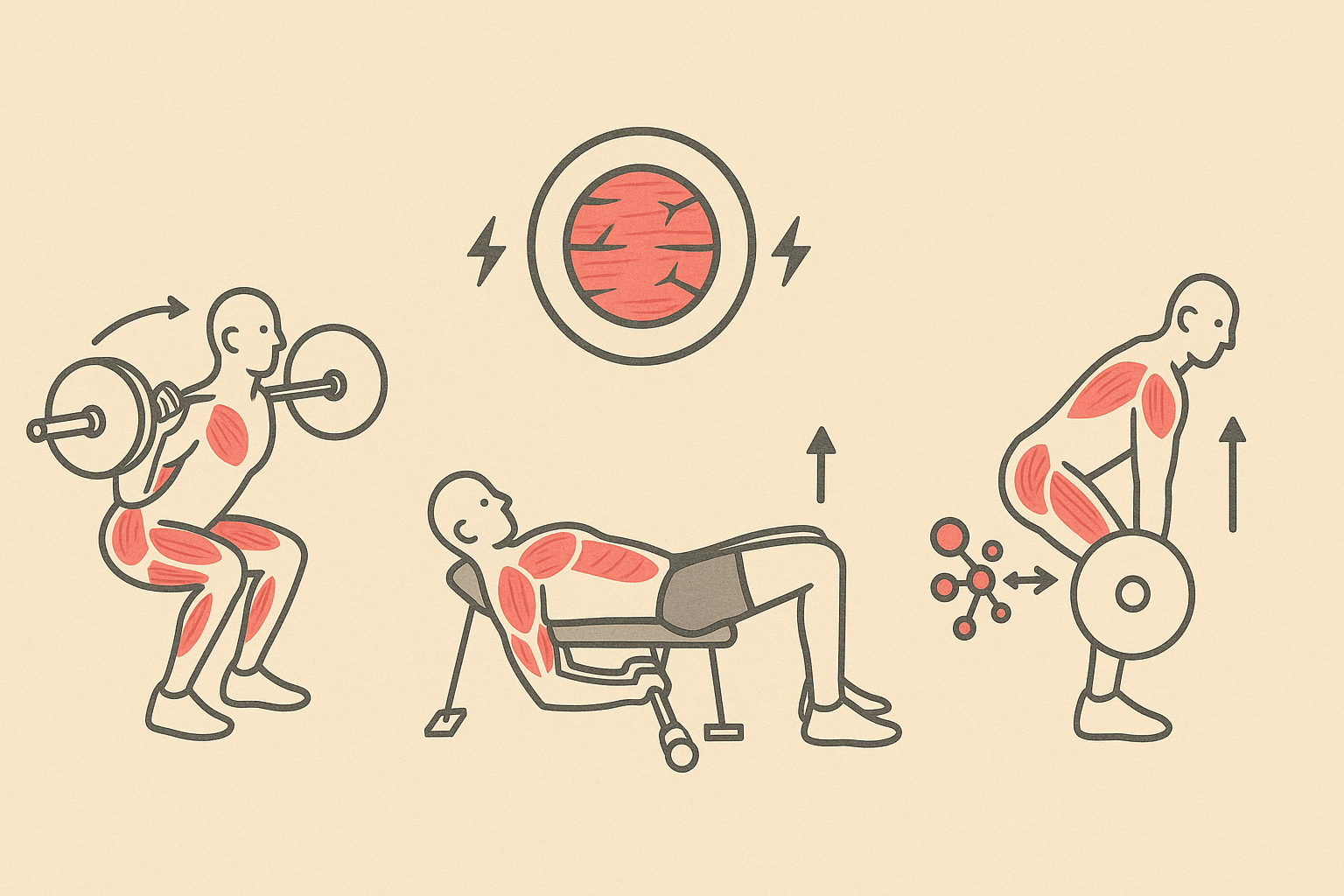
Common Mistakes to Avoid When Following a 5×5 Workout Program
Despite its simplicity, many lifters make avoidable errors when implementing a 5×5 workout program. One of the most frequent mistakes is using poor form in the pursuit of heavier weights. The desire to increase load quickly can lead to compromised technique, which not only reduces the effectiveness of the lift but also increases the risk of injury. Maintaining strict form and only progressing when confident in one’s movement patterns is essential for safety and long-term success.
Another common pitfall is neglecting recovery. The intensity and volume of the 5×5 routine place significant demands on the musculoskeletal and nervous systems. Failing to get adequate sleep, consume enough protein, or manage stress levels can lead to stagnation or regression. Recovery should be seen as an active part of the program, not an afterthought. This includes rest days, mobility work, and nutritional support tailored to the individual’s energy expenditure.
Lastly, lifters sometimes ignore the principle of progression. It’s easy to fall into the trap of repeating the same weights week after week without challenging the muscles to adapt. Tracking workouts and incrementally increasing resistance—even if only by a small margin—is critical. Lifters must stay attentive to their performance trends and make deliberate adjustments to ensure ongoing development. When done correctly, these habits become second nature and contribute to a lifetime of strength and fitness.
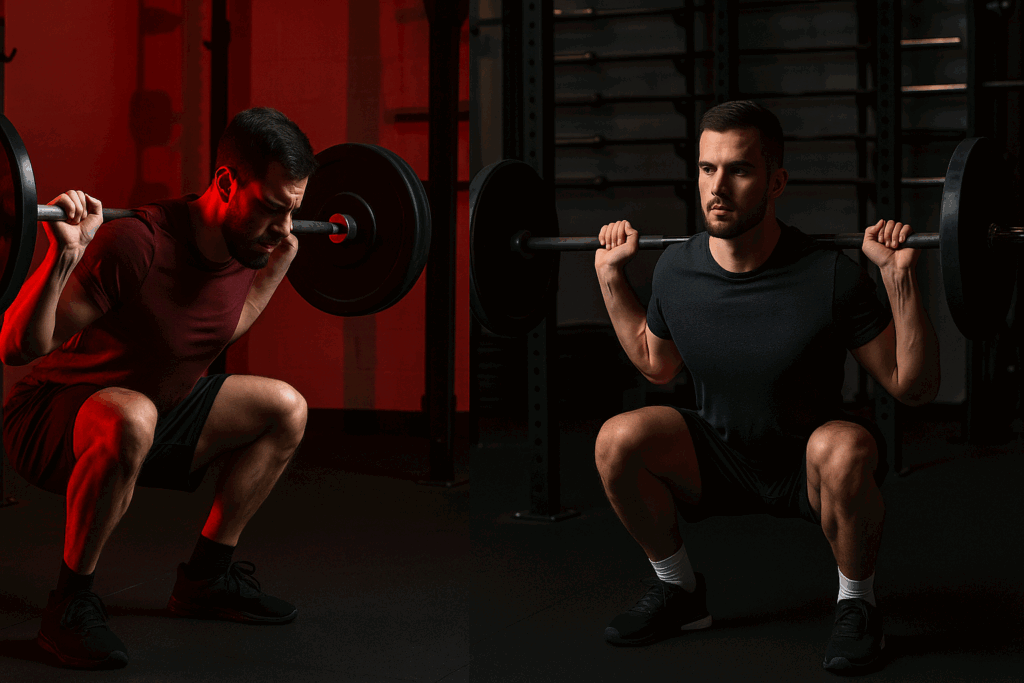
Advanced Strategies for Enhancing Your 5×5 Workout Results
As lifters become more experienced, fine-tuning the 5×5 program can lead to even greater results. One effective strategy is integrating pause reps or tempo variations. For example, pausing at the bottom of a squat builds control and eliminates the reliance on elastic rebound. Similarly, slowing down the eccentric phase (the lowering portion) of a bench press increases time under tension, which can stimulate greater muscle growth.
Another technique is the strategic inclusion of deload weeks. Every four to six weeks, reducing volume or intensity can help reset the nervous system and allow tissues to recover more fully. This proactive approach prevents burnout and maintains performance consistency. Additionally, advanced lifters might alternate between barbell variations, such as using a front squat instead of a back squat, to target different aspects of the muscle group and avoid adaptation.
Finally, integrating tools like lifting belts, knee sleeves, or wrist wraps can provide additional support during high-intensity phases. While these should not be relied on for daily training, they can help protect vulnerable joints during maximal effort sets. With careful planning and attention to recovery, advanced trainees can continue benefiting from the 5×5 workout long after they’ve left the beginner phase behind.

Frequently Asked Questions: Advanced Insights into the 5×5 Workout for Strength and Performance
1. Can the 5×5 workout be used effectively for cutting fat while preserving muscle mass?
Yes, the 5×5 workout can be adapted for fat loss when paired with a calorie-controlled diet and adequate cardiovascular activity. The heavy compound lifts in the 5×5 workout routine stimulate muscle maintenance even during a caloric deficit, which helps preserve lean mass. Unlike high-repetition programs that emphasize metabolic fatigue, the 5×5 structure prioritizes neuromuscular tension, which signals the body to retain muscle tissue. To support fat loss, some athletes incorporate short conditioning sessions, such as sprints or rowing intervals, immediately after their strength sessions. This hybrid approach maintains strength gains while promoting improved body composition, making the 5×5 workout an excellent tool not only for bulking but also for recomposition goals.
2. How can women benefit from the 5×5 workout without becoming overly muscular?
The belief that women will become excessively muscular through 5×5 training is a misconception rooted in outdated fitness myths. In reality, due to lower levels of testosterone, women tend to develop lean, defined physiques rather than bulky frames when following a 5×5 workout plan. The compound nature of the 5×5 exercises promotes strength, improves bone density, and enhances metabolic efficiency, which are all vital for women’s long-term health. Additionally, women who perform the five by five workout often report improved posture, athleticism, and confidence. For those seeking a leaner look, the 5×5 training system can be combined with light aerobic exercise and nutrition strategies tailored to fat reduction without compromising strength.
3. What makes the 5 and 5 workout different from high-volume bodybuilding programs?
The 5 and 5 workout emphasizes intensity over volume by focusing on low-repetition, heavy-load compound movements. Unlike typical bodybuilding routines that use isolation exercises and higher rep ranges (often 8–12 reps), the 5×5 program targets maximal strength and neurological adaptation. This results in denser, more functional muscle development that translates well into sports performance, physical labor, and injury prevention. Additionally, the recovery demands of the 5 x 5 approach are unique; lifters require more rest between sets and across training days to manage central nervous system fatigue. While hypertrophy can still occur, the muscle gained is often more practical and evenly distributed, making the 5×5 workout exercises ideal for those seeking long-term functional strength rather than purely aesthetic results.
4. How does sleep and recovery impact success in a 5×5 workout routine?
Sleep and recovery are integral to the success of any 5×5 training program because this type of strength training taxes both muscular and neural systems. Each session involves lifting near-maximal loads, which causes microtrauma in the muscle fibers and places a heavy demand on the nervous system. Without sufficient deep sleep—where growth hormone production peaks—the body cannot repair and rebuild stronger tissue efficiently. Furthermore, inadequate recovery between sessions can lead to central fatigue, impairing performance, motivation, and even mood regulation. Serious practitioners of the 5×5 workout routine often prioritize 7–9 hours of quality sleep, hydration, and active recovery methods like foam rolling or mobility drills to support consistent gains and injury prevention.
5. What are the long-term benefits of staying on a 5×5 workout plan beyond the first year?
Staying committed to a 5×5 workout plan beyond the initial adaptation phase yields several long-term benefits, including increased bone mineral density, improved hormonal balance, and better body composition management. Over time, trainees also experience significant improvements in their proprioception and coordination due to repeated exposure to complex lifts. These neurological gains can improve performance in other sports or physical activities and contribute to better injury resilience. As progress slows, experienced lifters often modify the program by cycling intensities, introducing deloads, or incorporating advanced periodization—all of which keep training stimulating and effective. Ultimately, the five by five workout fosters a structured, lifelong relationship with strength training grounded in measurable progress and sustainable practice.
6. Optimizing the 5×5 Workout for Aging Lifters: What Should Change Over Time?
As lifters age, their bodies become more sensitive to volume, recovery demands, and joint stress. Fortunately, the 5×5 workout is flexible enough to accommodate these shifts with thoughtful adjustments. Older athletes may benefit from reducing weekly frequency from three full-body sessions to two, allowing for extended recovery windows. Substituting barbell lifts for dumbbell or machine variations can also reduce joint strain while maintaining resistance. Incorporating longer warm-ups, mobility drills, and focused post-session stretching becomes critical to joint longevity. Additionally, adjusting rep tempo—slowing down eccentrics or incorporating pauses—can help aging lifters maintain muscular tension and strength without needing to chase heavier weights. This evolution of the 5×5 workout plan keeps it safe, sustainable, and effective across all life stages.
7. Integrating the Lift Strong 5×5 Philosophy into Athletic Training Programs
Athletes in sports ranging from basketball to martial arts are increasingly turning to the lift strong 5×5 philosophy to build strength that transfers to competition. The explosive, compound nature of 5×5 exercises improves force production, which is directly applicable to sprinting, jumping, or striking. Coaches often integrate 5×5 training into the off-season phase, where the focus shifts from skill work to raw power development. Using lifts like trap bar deadlifts, box squats, and weighted chin-ups within the 5×5 structure enhances athletic versatility while minimizing overuse injuries. Additionally, by strengthening the connective tissues and core stabilizers, this system reduces injury risk during high-impact sports. The discipline instilled by lift strong 5×5 sessions—particularly around form and tempo—also reinforces mental composure under pressure, a key asset in competition.
8. Is it possible to use the 5×5 program for rehabilitation after injury?
While traditionally seen as a performance-focused approach, the 5×5 program can be adapted for rehabilitation if guided by a qualified coach or physical therapist. The key is modifying intensity, movement selection, and progression speed to match the individual’s recovery timeline. For example, using goblet squats in place of barbell back squats can ease spinal loading while still training essential movement patterns. The 5×5 structure’s predictability and slow progression help rebuild strength symmetrically, which is critical when rebalancing after an injury. Moreover, consistent tracking of weights and reps provides a clear framework for gauging recovery milestones. This makes the 5×5 training method particularly useful in the intermediate-to-late phases of rehab when athletes are ready to transition back to higher-intensity resistance work.
9. How do 5×5 workout exercises influence hormonal health and metabolic function?
Performing 5×5 workout exercises has been shown to significantly influence hormonal health by increasing anabolic hormone levels, including testosterone and growth hormone. These hormonal shifts not only support muscle growth but also contribute to improved insulin sensitivity, mood stability, and fat metabolism. The intensity and volume of the 5×5 workout program also stimulate the release of endorphins and neuropeptides that can alleviate stress and enhance cognitive function. Over time, regular heavy lifting can even help regulate thyroid function and lower resting cortisol levels, especially when coupled with proper recovery. These systemic benefits contribute to better energy balance and overall metabolic health, which is particularly important for individuals with sedentary lifestyles or those managing metabolic disorders such as prediabetes or insulin resistance.
10. Advanced Programming Strategies to Evolve Beyond the Basic 5×5 Workout
Once a lifter has plateaued with the classic 5×5 workout program, advanced strategies can offer renewed stimulus and progression. One such method is “wave loading,” where each of the five sets increases in weight but decreases in reps, followed by a return to a lighter wave—this manipulates neural adaptation without dramatically increasing volume. Another technique involves “rest-pause sets,” where lifters take short intra-set breaks to complete additional reps at the same weight, extending time under tension. Including contrast training, where a heavy lift is followed by an explosive movement (such as a squat followed by a jump), can also enhance power output. Lifters may also cycle between 5×5 training and alternative rep schemes like 3×8 or 4×6 to prevent stagnation and maintain motivation. These progressive tweaks preserve the structure of the 5×5 workout while adding complexity appropriate for experienced trainees ready for the next level.
Conclusion: Embrace the 5×5 Workout for Lifelong Strength and Progress
In an era where fitness trends come and go, the enduring success of the 5×5 workout stands as a testament to its simplicity, efficacy, and scientific foundation. By focusing on the core principles of compound lifting, progressive overload, and consistent effort, this method offers a clear and measurable path toward total body strength. The 5×5 workout routine is not just a beginner’s program—it’s a proven system that can be tailored to any level of athlete, evolving with you as your goals and capabilities change.
Through this article, we’ve explored how the five by five workout stimulates muscle growth, enhances neuromuscular coordination, and builds the mental resilience necessary for long-term success. We’ve also examined the scientific underpinnings that make the 5×5 program effective, including its impact on hormone production, muscle fiber activation, and structural adaptation. These principles are not gimmicks—they are backed by decades of research and real-world results.
Whether you’re looking to start your fitness journey or break through existing plateaus, embracing the lift strong 5×5 philosophy can transform both your physique and mindset. It demands discipline, rewards consistency, and cultivates a foundation of strength that extends far beyond the gym. By committing to this time-tested approach, you’ll unlock powerful results not only in your body but in your confidence, resilience, and overall performance.
Further Reading:
Get Freakishly Strong With the 5×5 Workout Program
Build Serious Strength and Size with a 5×5 Workout Program
Stronglifts 5×5: The Complete Guide to Building Strength and Muscle





